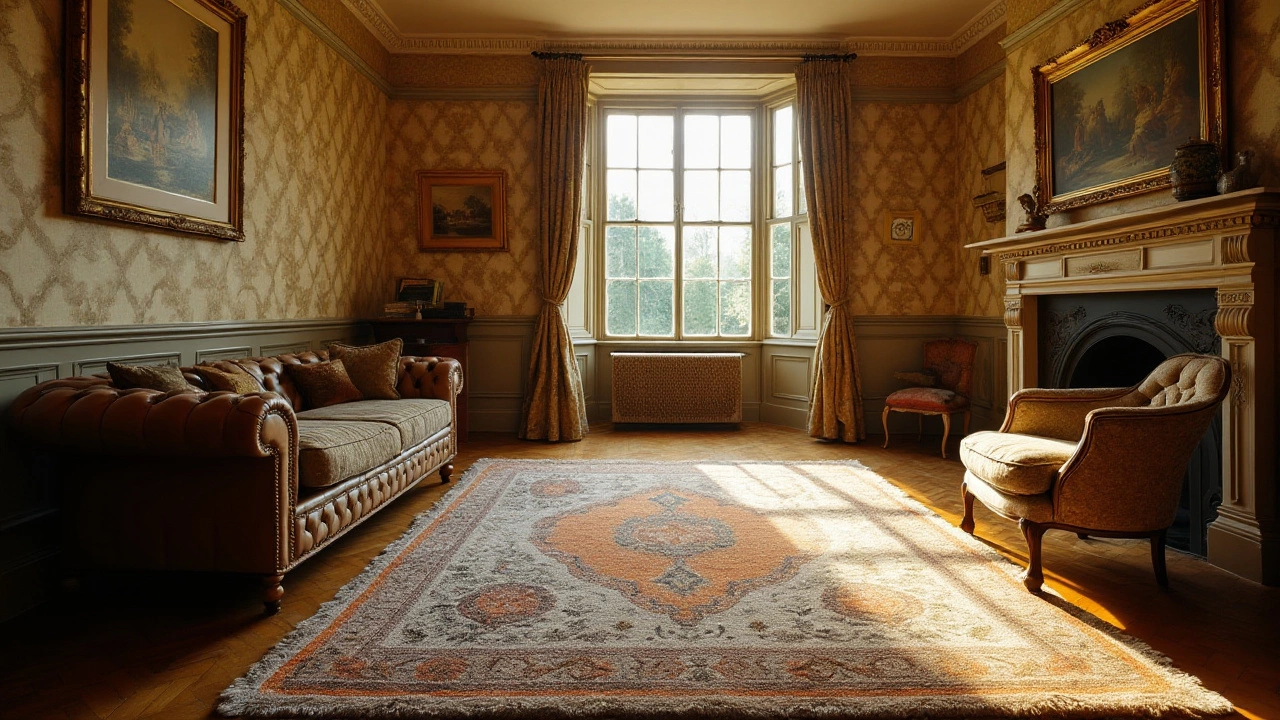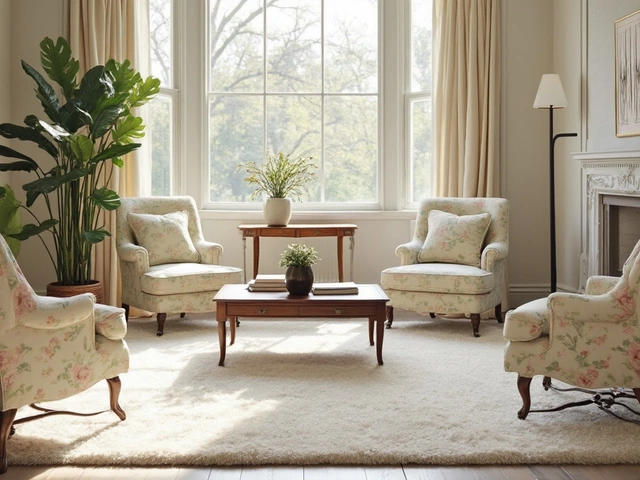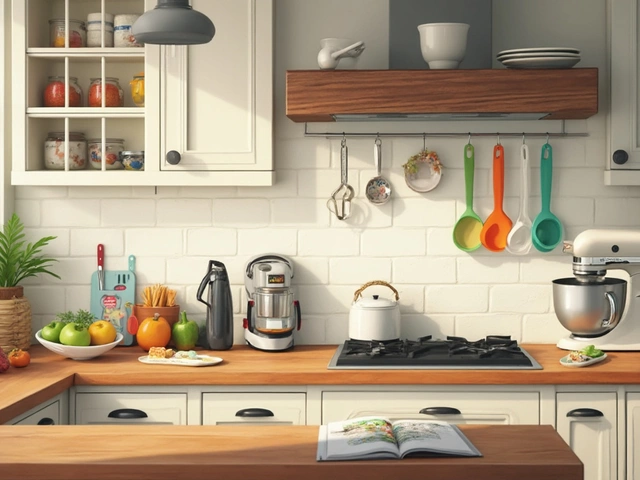Rugs can be as essential to a room as the walls and ceiling. They offer more than just a soft surface underfoot; they anchor furniture, define spaces, and add a dash of style. The size of a rug can greatly influence the feel of the space, creating either a cozy nook or an expansive atmosphere.
Deciding whether a rug should cover the entire floor or simply define a space within it depends on multiple factors, from room size and furniture layout to personal design preferences. It's not just about aesthetics; the right rug size can enhance functionality and guide the flow of a room.
Let's delve into understanding the nuances of choosing the ideal rug size tailored to your space, ensuring you make an informed decision that meshes well with your home decor vision.
- Understanding Room Size and Function
- Role of Rugs in Design
- Standard Rug Sizing Options
- Layering and Placement Techniques
- Common Mistakes to Avoid
- Personalizing Your Space with Rugs
Understanding Room Size and Function
The size and function of a room are two of the most critical components when deciding on the appropriate rug size. Each room in a home serves a distinct purpose and carries its unique character, influencing how a rug should be placed. For instance, a large living room can comfortably accommodate a rug that either covers most of the floor or is strategically placed under key pieces like the sofa and coffee table. Such a decision can dramatically change the room's ambiance. When a rug extends under all major furniture pieces, it provides a unified and coherent look, while opting for a smaller rug can create a focal point that draws the eye.
Meanwhile, smaller rooms benefit from more modest options, as a rugs that covers the entire space can sometimes feel overwhelming and may make the room appear cramped. Instead, selecting a rug that leaves some floor visible around the edges can help make the room seem larger and airier. It's essential to balance between filling the space and avoiding excessive covering, which can be visually overbearing.
Functionality also plays a major part—consider how the room is used day-to-day. In dining rooms, for instance, the rug should ideally extend at least 24 inches beyond all sides of the dining table. This not only accommodates chairs even when pulled out but also contributes to a more balanced look. Similarly, in a bedroom, if the rug is large enough to cover the entire floor, it creates a cozy, enveloped feeling when stepping out of bed.
"A rug is not just an accessory but a foundational piece that plays a pivotal role in defining the boundaries and enhancing the aesthetic appeal of a room," remarked renowned interior designer Nate Berkus.
In terms of design, a rug that aligns with the purpose of the room can either subtly complement or audaciously contrast the decor. For heavily trafficked areas, consider durability and choose a design that hides dirt or wear, ensuring longevity without sacrificing style. Often, the color and pattern play significant roles in this decision-making process, as bolder hues and intricate patterns tend to attract more attention, while softer colors blend into the background.
The specific dimensions of a room should guide you toward the best choices. A quick tip is to opt for larger rugs where possible to maintain a cohesive look, yet ensuring there's enough floor space left to frame the room adequately. Personal preference inevitably influences this decision, but seeing how the size and function of a space interact helps determine the ideal rug size efficiently.
Role of Rugs in Design
The role of rugs in interior design can't be overstated. These pieces often act as the canvas of a room, guiding the eye and grounding the design elements. Rugs have the power to redefine a space's character, whether through color, pattern, or texture. They set the stage for the rest of the room's decor choices, bringing together disparate elements into a cohesive whole. From a strategic perspective, rugs can delineate areas in open-plan settings, seamlessly weaving in functional zones like seating arrangements, dining spaces, or children's play areas.
Consider a living room with hardwood floors – while sleek, these floors can feel cold, both visually and literally, in a room primarily used for relaxation. Introducing a large-scale rug not only adds warmth and cushioning underfoot but also absorbs sound, improving the acoustics of the space. By choosing a rug that blends harmoniously or has a bold design, you create a focal point that can inspire complementary or contrasting furnishings, from couches and armchairs to throw pillows and wall art.
"A rug should be the soul of the room. It should reflect the personality of the space, tying all elements together," says Marie Flanigan, renowned interior designer.
Rugs come in a multitude of textures, each adding a different sensory layer to a room. A thick, shaggy rug invites a sense of cozy luxury, particularly in intimate settings like the bedroom. On the other hand, a tightly woven sisal rug might evoke simplicity and earthiness, perfect for coastal-inspired or minimalist spaces. When integrating a rug's texture into your decor scheme, consider balance. A highly textured rug might call for smoother surfaces elsewhere in the room to avoid visual clutter.
Patterns and colors on a rug can significantly manipulate perception of space. In smaller rooms, lighter-colored rugs with simple patterns can create an illusion of openness. Conversely, bolder patterns may be your ally in expansive spaces, offering depth and interest where large voids might otherwise appear. The trick to using rugs effectively lies in proportion and contrast. For vibrant, busy rooms, a more muted rug can provide a sense of peace and cohesiveness. However, in neutral or minimal designs, a detailed, colorful rug might be just what's needed to break monotony and inject character.
Design Techniques with Rugs
Designers often employ clever techniques, such as layering rugs to create eclectic and dynamic styles. This method involves placing a smaller patterned rug atop a larger, neutral base. This not only adds texture and dimension but also allows for seasonal decor updates. Moreover, doubling up rugs can be practical, extending their lifespan by spreading wear more evenly.
The choices are vast, and the design possibilities are virtually endless. However, one constant is the rug's ability to anchor a room, supporting the aesthetic and functional goals of the space. It's this dual role of style and function that makes rugs such a critical component of any design blueprint.
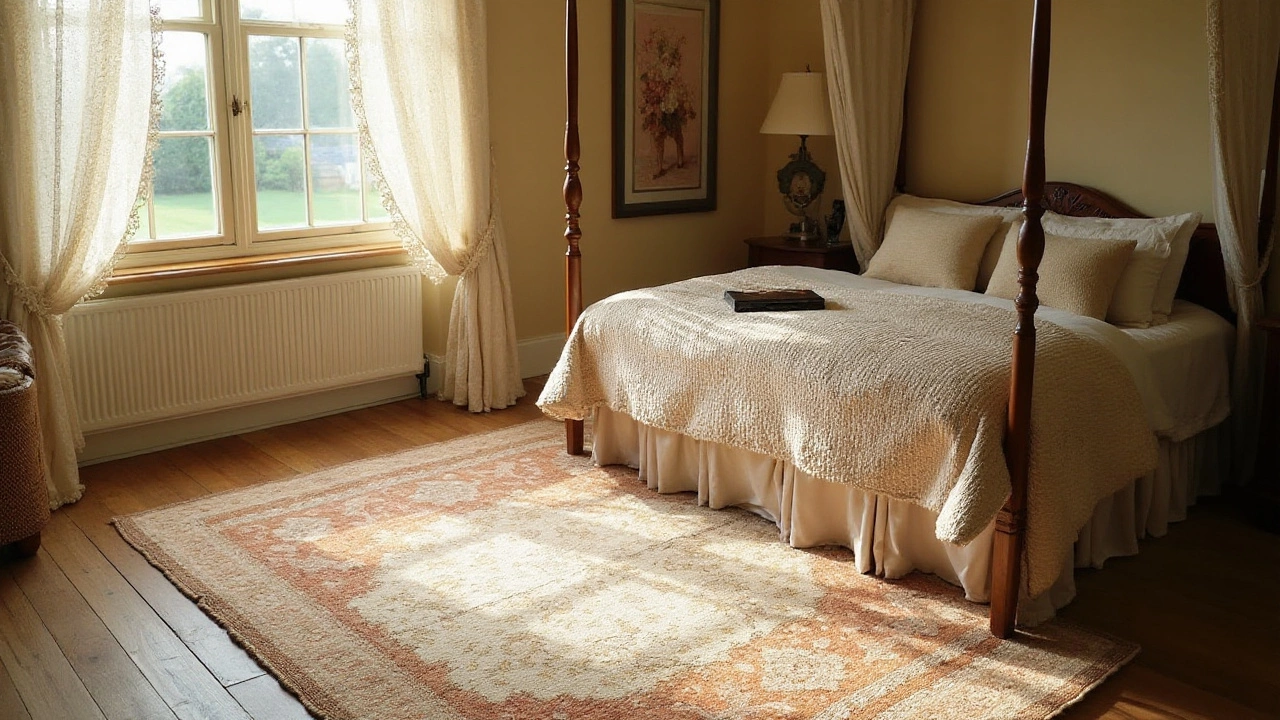
Standard Rug Sizing Options
When it comes to choosing a rug size, understanding the standard sizing options can save homeowners a lot of hassle and potential decorating missteps. Standard rug sizes are generally established to fit the most common room dimensions and furniture arrangements, making it easier for you to pick a suitable choice without needing a custom solution. From small entry rugs to large area rugs, these sizes cover a broad spectrum, each serving distinct purposes in a household.
Typically, rugs come in standard sizes like 5x8 feet, 8x10 feet, and 9x12 feet. The smaller 3x5 feet options are often used in niches like entryways or kitchens, providing a soft surface and often serving as a colorful welcome mat. The 5x8 feet rug is a versatile size, ideal for home offices or small living rooms, comfortably fitting under a coffee table or accentuating a single piece of furniture like a sofa. For dining rooms and large living rooms, the 8x10 feet rug is quite popular, enabling you to place all your furniture completely within the rug's boundaries, creating a harmonious look.
Larger options, like 9x12 feet rugs, are designed for expansive spaces where you wish to create a full room experience. In these cases, the rug becomes a dominant design feature that ties together the entire room's decor. To maximize comfort and style, you could go even larger, perhaps using a 12x15 feet rug, which can cover almost an entire room, leaving a border of floor exposed, which is often considered an elegant approach. Long runners, starting at 2x8 feet, are perfect for hallways, providing a stylish path through your home.
"Rugs should complement the room’s dimensions. Always take into account the way natural light casts shadows and highlights the rug's patterns," advises interior designer Carly Hughes, emphasizing the importance of lighting in rug selection.
Choosing Based on Placement
If you're placing a rug under a dining table, it’s crucial to consider that chairs should remain on the rug even when pulled out. This often means selecting a rug that extends at least 24 inches beyond the table edge, ensuring that functionality meets fashion. For bedrooms, placing a rug under the bed can create a luxury hotel suite feel. Typically, you’d want the rug to extend out past the sides of the bed, leaving about 36 inches on each side to provide warmth when you step out of bed.
The living room often presents the most variety in rug placement. Some prefer the "all furniture on" approach, where all major pieces of furniture, such as the sofa and chairs, are consolidated within the rug's area. Others might opt for "front legs on," a flexible setup where only the front legs of furniture pieces rest on the rug, which particularly suits rooms with an open concept. The "no furniture on" style, where the rug acts as an accent piece between seating without anchoring items, can add a contemporary flair, making the rug a standalone art piece.
Custom Rugs: When Standard Sizes Don’t Fit
Sometimes, standard sizes just don’t fit the architectural uniqueness of a space. Custom rugs offer a solution, allowing personalized sizing to better suit specific room requirements. Though this can be costlier, the investment often pays off in perfectly complementing non-standard rooms or unique furniture arrangements. Regardless of the choice between standard and custom, it's essential to balance function with design, ensuring the rug doesn’t dominate or disappear into the space.
Layering and Placement Techniques
Layering rugs is a trend that not only adds visual interest but also allows you to bring texture and depth into a room with minimal effort. It’s an art that can transform a mundane space into a striking and dynamic environment. When thinking about rug size and placement, consider the structure of your room—whether it’s a living room, bedroom, or dining area. In a living room, layering a large neutral rug with smaller vibrantly-colored or patterned ones creates zones that invite relaxation and conversation.
Subtly contrasting textures like a jute rug with a plush, soft one can make a big difference in how a room's vibe feels. Not just the materials, but their patterns and colors should also complement each other. This technique of layering does wonders in eclectic and boho-style interiors, but it can be adapted to almost any design style. Balancing the visual weight by ensuring rugs aren’t competing with each other in terms of color or pattern size can enhance your decor greatly.
“The layering trend offers endless design opportunities, each layer bringing a new depth to the room,” says interior designer Kate Watson. She recommends playing with various shapes and sizes to build a unique look that's still cohesive and pleasing to the eye.
Placement of rugs is not just about the floor; rug sizes can play beautifully with the layout of the furniture. A rule of thumb for placing rugs under furniture is ensuring that either all the front legs of your seating arrangements rest on the rug or that all legs sit snugly on its surface. This nested arrangement not only binds the furniture together visually but also highlights the rugs as focal points. For instance, under a dining table, ideally, the rug should be wide enough that chairs remain on the rug even when pulled out.
Another innovative approach involves placing a bold rug at a slightly diagonal angle. This cuts through the rigidity of square or rectangular rooms, adding a layer of interest and modernity to the space. Don't be afraid to experiment a bit—sometimes the quirkiest placements can turn out to be the most visually appealing. For those with open-plan spaces, employing two or three different rugs can help define each area while maintaining a sense of flow between them. Just be mindful that their colors and patterns echo some elements of each other to maintain harmony.
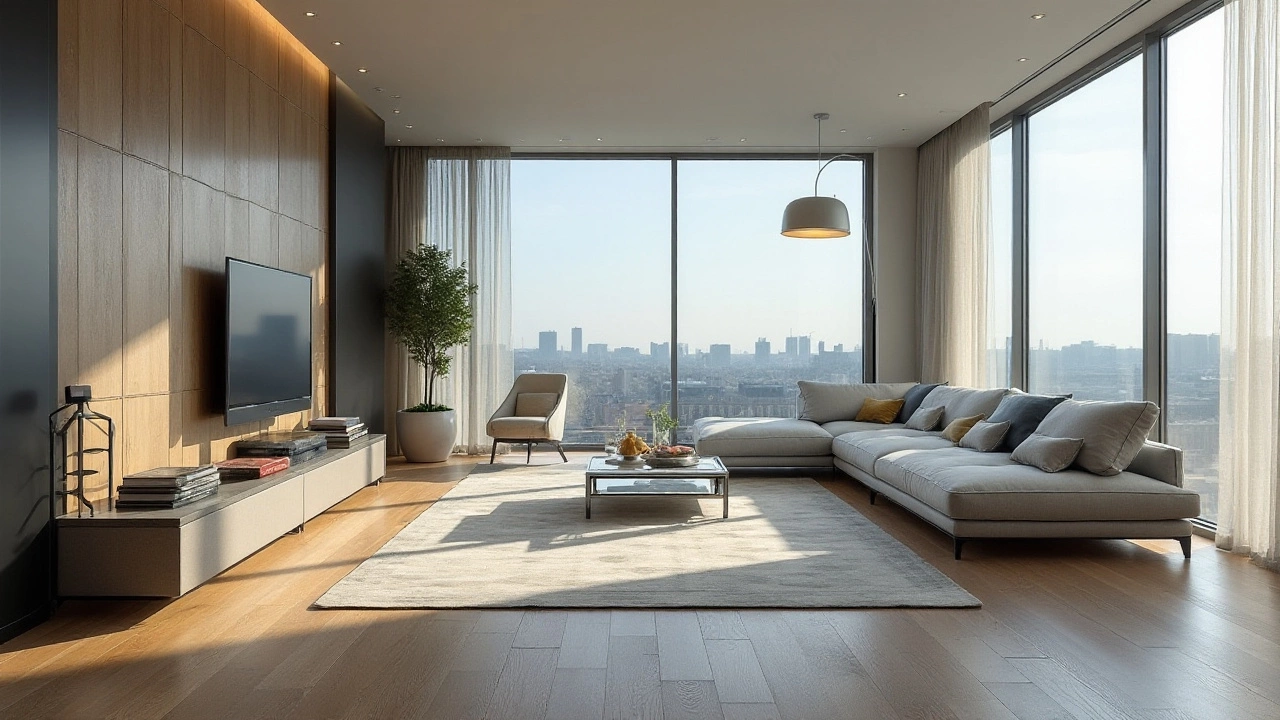
Common Mistakes to Avoid
When it comes to choosing a rug, it's easy to fall into some common traps that can hinder the desired transformation of your space. One major mistake is selecting a rug size that's either too small or too large. A rug that's too small can make a room appear disjointed, creating visual clutter instead of cohesion. On the other hand, a rug that swallows the entire floor can rob a room of its character, making it seem lifeless. Achieving harmony means finding that sweet spot where the rug integrates with both the furniture and the room's dimensions.
Another frequent misstep involves neglecting the specific function of the room. Every room has a purpose, and the rug should complement this. For example, in a dining room, legs of the chair should remain on the rug even when pulled out, which prevents awkward floor transitions during meals. Placing a rug in a high-traffic area made of delicate material can lead to rapid wear and tear. Choosing rugs mindfully contributes to both usability and longevity of your home decor.
"Choose the rug that fits in harmony with your space, the furniture, and the lifestyle you lead. A harmonious blend makes a house feel like a home." – Interior Designer Jane Michaels
Moreover, ignoring the impact of colors and patterns is a pitfall. While it's tempting to pick a rug purely based on attractiveness, it must also synchronize with the existing color scheme and patterns in the room. A bold design might clash with patterned wallpapers or upholstery, while a neutral choice could provide balance. Utilizing a color wheel or seeking professional advice can prevent these aesthetic discrepancies, allowing the rug to enhance rather than disrupt the decorative flow.
Overlooking the importance of placement can also detract from a room's appeal. Ensure that areas meant to be showcased, such as a living room, have rugs that anchor key pieces of furniture effectively. This means the front legs of a couch or chairs should rest on the rug, ensuring an inviting seating area, while defining contours of the space. A close distance creates visual cohesion and groundedness. Calculating distances accurately and aligning them with furniture positions transforms spatial interactions organically and smoothly.
One final mistake is thinking that a high price equals better suitability. Costly rugs can indeed be masterpieces of craftsmanship, but they might be inappropriate if they don't align with practicality and design needs. Expressive home decor sometimes requires balancing investment with utility, understanding how the piece will be used, and how it fits with your style.
By avoiding these common mistakes, you create spaces that offer both beauty and function—providing comfort and satisfaction in your environment. Choosing wisely involves a blend of measurement, style, and practicality, ensuring that your home resonates with elegance and warmth.
Personalizing Your Space with Rugs
When it comes to home decor, nothing sets the tone quite like the right rugs. They have a transformative power that can redefine any room. Rugs are more than just floor coverings; they're like a canvas on which the rest of your room's decor is painted. Finding the perfect rug isn't only about picking a design or color that pleases the eye. It's also about capturing the essence of your style in a piece that seamlessly fits your home's narrative. By choosing a rug that aligns with your personality and design preferences, you not only enhance the aesthetics of a space but also make it uniquely yours.
Rugs come in a plethora of colors, patterns, and materials, allowing for extensive personalization. Are you someone who loves bright and bold patterns, or do softer, neutral tones speak to you more? These choices can reflect your mood and personal taste. Additionally, the material of a rug—be it natural fibers like wool and cotton, or synthetic ones like nylon—can impact the feel and durability of the floor covering. Wool rugs add a touch of elegance and warmth, perfect for cozy spaces, while jute or sisal options offer a rustic charm, ideal for casual or nature-inspired decor.
Layering rugs is a trend that has recently gained popularity, presenting an opportunity to express creativity. Placing a smaller, ornate rug atop a larger, neutral rug can create a focal point. This technique not only adds depth and interest to your room but also serves practical purposes in defining areas, such as seating zones in a large open space. Noted interior designer, Sarah Richardson, states,
"An area rug does more than keeping your feet warm. It's like a piece of art for your floor and should be viewed as an integral part of your room's design concept."
Your rug can also narrate a story through its origin. Handwoven rugs and ethnic patterns can bring a touch of exotic charm or cultural heritage into your home, connecting you with different parts of the world. The beauty of a rug is that it doesn't just complete a room; it elevates it. A vintage Persian rug, for instance, can add a layer of history and luxury, while a brightly colored Moroccan rug might inject a space with energy and vibrance.
Here’s a small insight into the impact of choosing the right rug:
| Rug Type | Impact |
|---|---|
| Wool | Luxurious and cozy; long-lasting due to natural fibers |
| Jute | Eco-friendly; adds a tactile and organic feel to spaces |
| Synthetic | Durable and great for high-traffic areas; easy to clean |
Choosing the right rug size, pattern, and material is a personal journey that intertwines with your lifestyle needs and decorating vision. Remember, your home should be a reflection of who you are, and a rug is one of the most personal choices you can make. It's not merely about filling a floor; it’s about completing your home’s story—your story.

